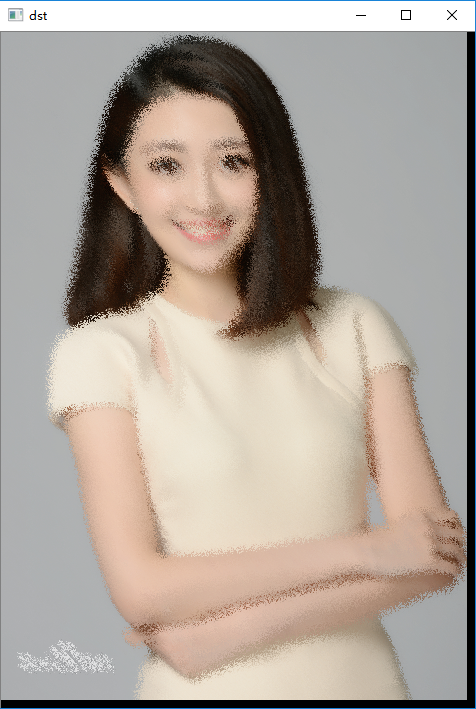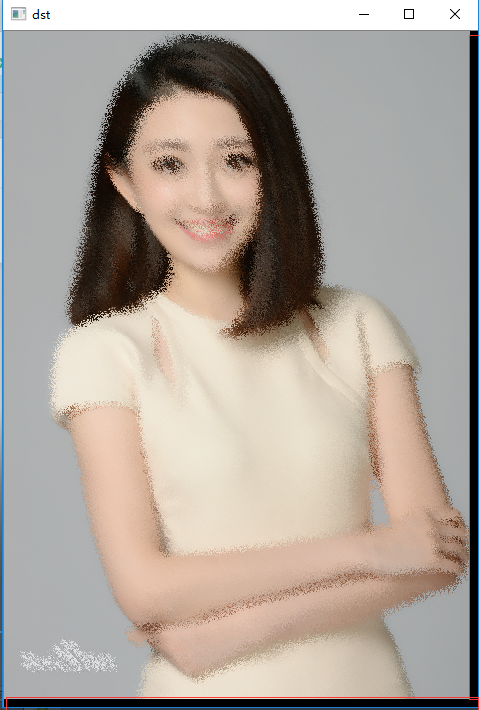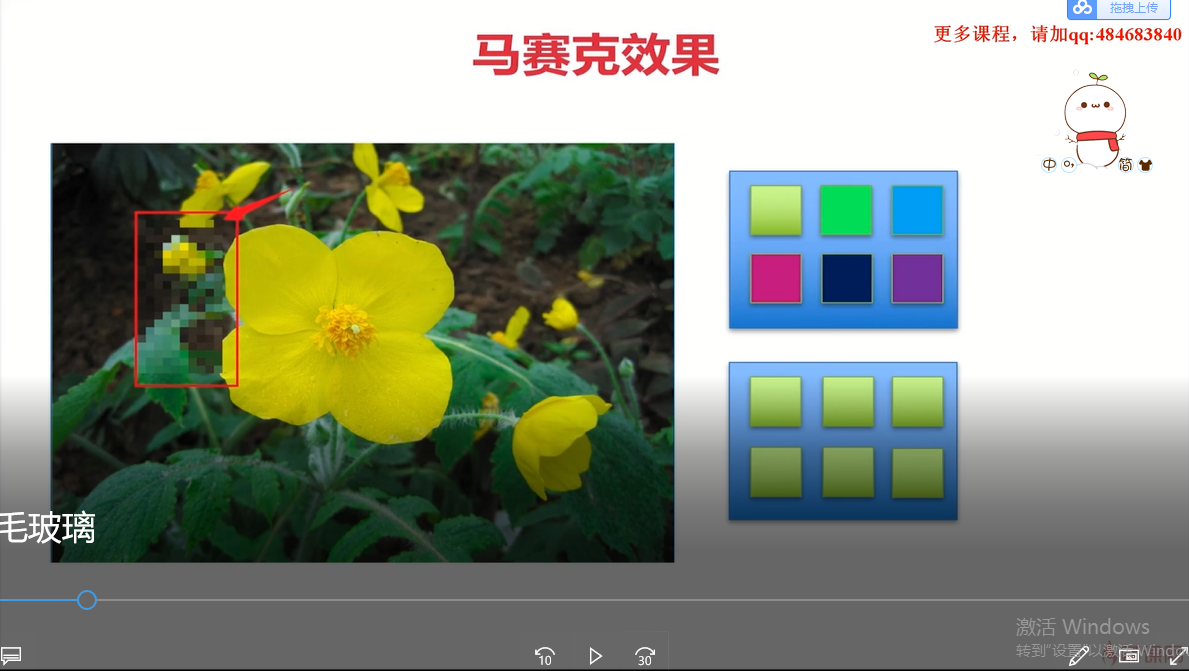
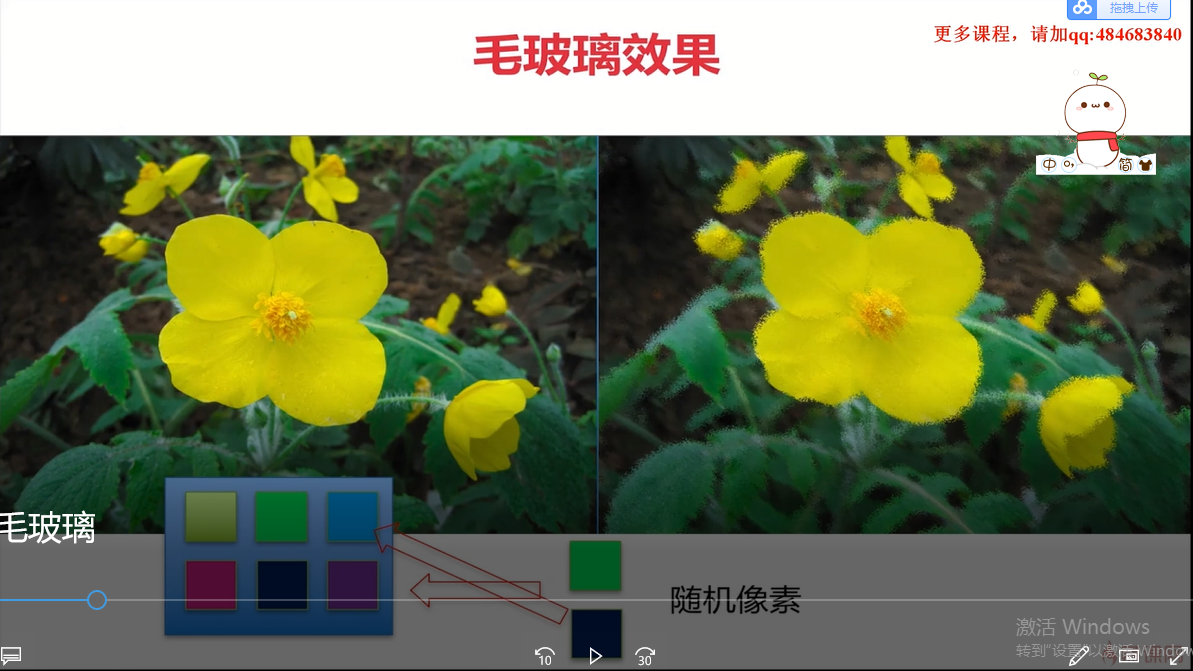
import cv2 import numpy as np import random img = cv2.imread('image2.jpg',1) imgInfo = img.shape height = imgInfo[0] width = imgInfo[1] dst = np.zeros((height,width,3),np.uint8)#为什么我们总是把高度放在第一位,因为我们当前的矩阵它是以行列式来展示的,所以它要先行后列. #我们过去图片中某一个元素也是先行后列.行就是当前的高度,列就是当前的宽度. mm = 8 for m in range(0,height): for n in range(0,width): index = int(random.random()*8)#0-8 (b,g,r) = img[m+index,n+index] dst[m,n] = (b,g,r) cv2.imshow('dst',dst) cv2.waitKey(0)
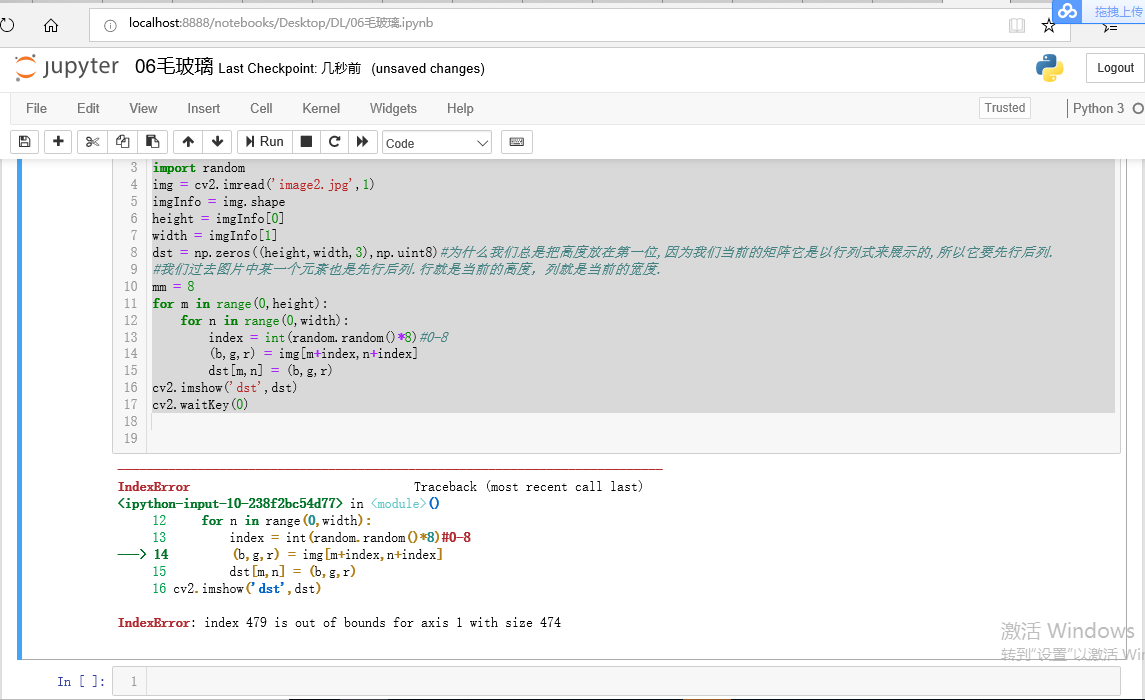
import cv2 import numpy as np import random img = cv2.imread('image2.jpg',1) imgInfo = img.shape height = imgInfo[0] width = imgInfo[1] dst = np.zeros((height,width,3),np.uint8)#为什么我们总是把高度放在第一位,因为我们当前的矩阵它是以行列式来展示的,所以它要先行后列. #我们过去图片中某一个元素也是先行后列.行就是当前的高度,列就是当前的宽度. mm = 8 for m in range(0,height-mm): for n in range(0,width-mm): index = int(random.random()*8)#0-8 (b,g,r) = img[m+index,n+index] dst[m,n] = (b,g,r) cv2.imshow('dst',dst) cv2.waitKey(0)
